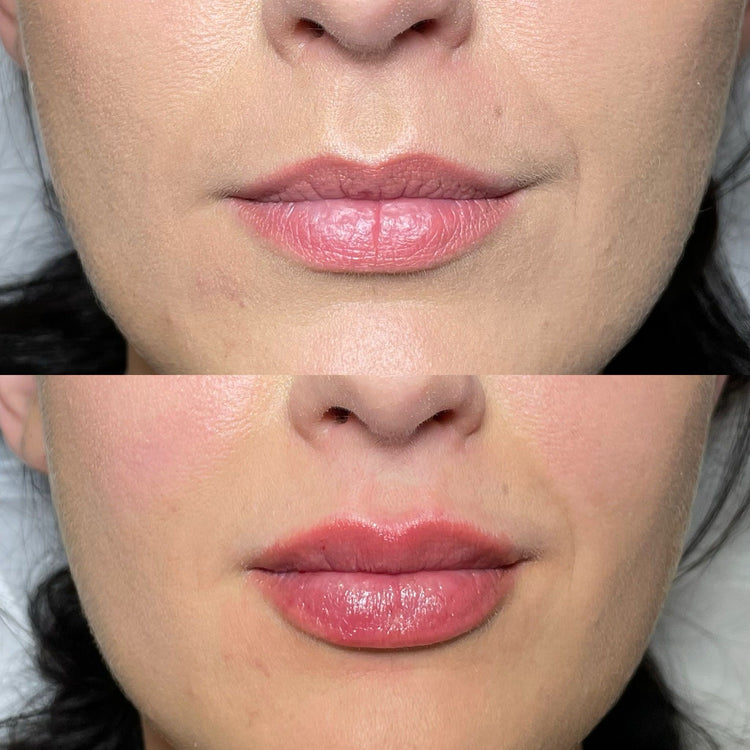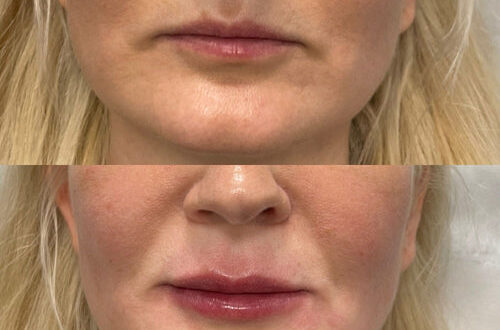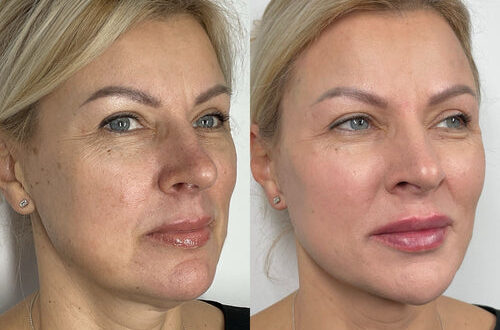Types of Dermal Fillers
In the realm of non-surgical aesthetics, dermal fillers have emerged as transformative tools for enhancing facial contours and addressing signs of aging. These injectables consist of various gel-like substances designed to add volume, smooth wrinkles, and restore a youthful appearance.
Hyaluronic Acid Fillers
Hyaluronic acid (HA) fillers constitute the most prevalent type of dermal filler utilized in the UK. HA is a naturally occurring substance found within the body, primarily responsible for maintaining skin hydration and elasticity. These fillers work by attracting and retaining water molecules, effectively plumping up the skin and reducing the appearance of fine lines, wrinkles, and folds.
HA fillers are available in diverse viscosities, allowing practitioners to tailor treatment to individual needs. Thicker HA gels are suitable for volumizing areas such as cheeks or lips, while thinner formulations excel at smoothing delicate lines around the eyes or mouth.
Calcium Hydroxylapatite Fillers
Beyond hyaluronic acid (HA) fillers, another notable type gaining popularity in the UK is calcium hydroxylapatite (Ca-HA).
- Ca-HA fillers are made from microspheres of calcium hydroxylapatite, a naturally occurring mineral found in bone.
- Unlike HA, which primarily plumps up the skin by attracting water, Ca-HA stimulates collagen production, leading to long-lasting volumization and skin tightening.
- Ca-HA fillers are particularly well-suited for addressing moderate to severe facial wrinkles and folds, as well as contouring the jawline or chin.
Poly-Lactic Acid (PLA) Fillers
Poly-Lactic Acid (PLA) fillers represent another category of dermal fillers gaining traction in the UK. PLA is a biodegradable synthetic polymer that stimulates collagen production over time.
Unlike HA fillers, which provide immediate volume, PLA fillers gradually release their effects as the body absorbs the PLA and produces new collagen. This gradual approach results in a more natural-looking enhancement that lasts for an extended period.
PLA fillers are often used to address deeper wrinkles and folds, as well as to contour facial features. They are also increasingly employed for non-facial applications, such as improving the appearance of scars or enhancing breast volume.
Applications of Dermal Fillers in the UK
The UK is witnessing a surge in popularity for dermal fillers, a cornerstone of modern non-surgical aesthetic treatments. These injectables offer a range of benefits, from smoothing wrinkles and restoring volume to refining facial contours.
Facial Volume Restoration
Dermal fillers are transforming the landscape of non-surgical aesthetics in the UK, providing innovative solutions for enhancing facial appearance and addressing signs of aging.
Hyaluronic acid (HA) fillers remain the most popular choice, leveraging the body’s natural substance to plump skin and diminish fine lines.
Calcium hydroxylapatite (Ca-HA) is gaining traction for its ability to stimulate collagen production, resulting in long-lasting volumization and skin tightening, making it ideal for treating deeper wrinkles and contours.
Poly-Lactic Acid (PLA) fillers offer a gradual approach to volume enhancement by stimulating collagen over time, providing natural-looking results that endure for an extended period.
Lip Augmentation
Lip augmentation is a popular application of dermal fillers in the UK. Hyaluronic acid fillers are commonly used to enhance lip volume, shape, and definition.
Practitioners can adjust the amount of filler injected and the specific placement to achieve desired results, ranging from subtle enhancement to dramatic plumping.
Lip augmentation with dermal fillers offers a non-surgical alternative to achieving fuller, more attractive lips.
Nasolabial Fold Reduction
Nasolabial folds, also known as smile lines, are creases that run from the bottom of the nose to the corners of the mouth. They are a common sign of aging and can make the face appear older and tired. Dermal fillers can effectively reduce the appearance of nasolabial folds.
Hyaluronic acid (HA) fillers are particularly effective for treating nasolabial folds. HA attracts water molecules, plumping up the skin and smoothing out wrinkles and folds.
A qualified practitioner will inject HA filler strategically along the nasolabial fold to restore volume and soften the appearance of the crease.
The results of nasolabial fold reduction with dermal fillers are typically noticeable immediately and can last for several months to a year, depending on the type of filler used and individual factors.
Chin and Jawline Contouring
Chin and jawline contouring is becoming increasingly popular in the UK as people seek more defined facial structures. Dermal fillers play a crucial role in achieving this aesthetic goal.
Fillers are strategically injected into the chin and jawline to add volume and create a more sculpted appearance. Hyaluronic acid (HA) fillers are commonly used for this purpose due to their ability to effectively plump up the area and enhance definition.
By injecting HA filler under the chin, practitioners can elevate and accentuate the chin, creating a more prominent and balanced jawline. Fillers can also be used to address asymmetries or to create a more angular appearance along the jawline.
The results of chin and jawline contouring with dermal fillers are typically immediate and can last for several months to a year.
Under-Eye Hollow Filling
One area where dermal fillers are making a significant impact is under-eye hollow filling.
- Under-eye hollows, or dark circles, are a common concern that can make the face appear tired and aged.
- Dermal fillers, particularly hyaluronic acid (HA) fillers, can effectively address this issue by adding volume to the under-eye area.
- By injecting HA filler strategically below the lower eyelid bone, practitioners can plump up the hollows, reducing their appearance and creating a smoother, more youthful look.
Benefits of Dermal Fillers over Surgical Procedures
In the realm of non-surgical aesthetics, dermal fillers have emerged as transformative tools for enhancing facial contours and addressing signs of aging. These injectables offer numerous advantages over surgical procedures, making them an increasingly popular choice among individuals seeking subtle yet impactful aesthetic improvements.
Minimally Invasive Treatment
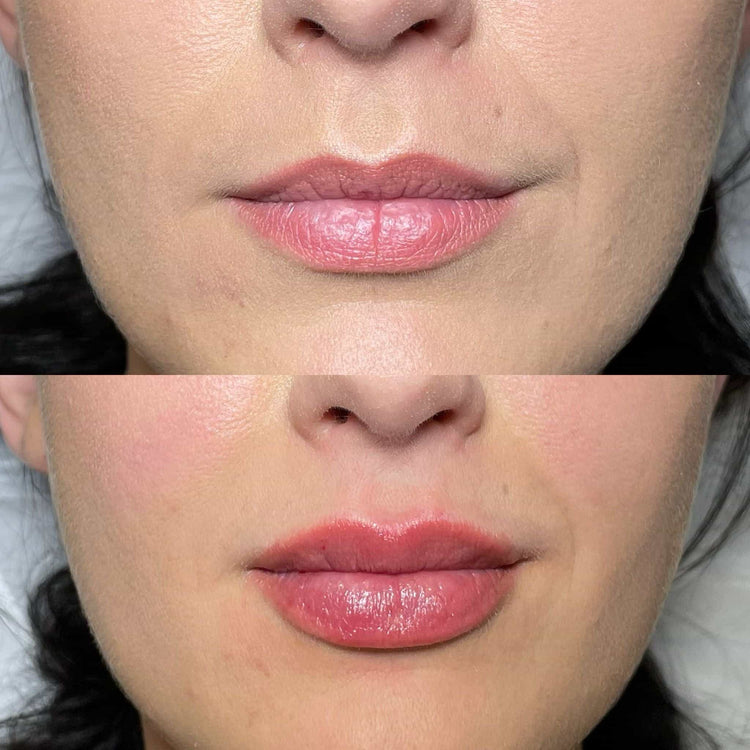
One of the most significant benefits of dermal fillers is their minimally invasive nature. Unlike surgical procedures, which involve incisions, anesthesia, and a lengthy recovery period, dermal fillers are administered through simple injections, minimizing discomfort and downtime. Patients can typically return to their normal activities immediately following treatment.
Another key advantage of dermal fillers is their versatility. They can be used to address a wide range of aesthetic concerns, including smoothing wrinkles, plumping lips, enhancing facial contours, and correcting asymmetry. This adaptability makes dermal fillers a valuable tool for achieving personalized results tailored to individual needs and goals.
Dermal fillers also offer a more temporary solution compared to surgical interventions. The effects of dermal fillers typically last for several months to a year, allowing individuals to experience the benefits without committing to permanent changes. This temporary nature provides flexibility and allows patients to adjust their treatment plan as desired.
Moreover, dermal fillers are generally associated with fewer risks and complications compared to surgical procedures. While potential side effects such as bruising, swelling, or redness are possible, they are typically mild and transient. The overall safety profile of dermal fillers makes them a suitable option for individuals seeking minimally invasive aesthetic enhancements.
The cost-effectiveness of dermal fillers is also a significant factor for many patients. Compared to the expense and recovery time associated with surgical procedures, dermal filler treatments tend to be more affordable and accessible.
Short Recovery Time
Dermal fillers have emerged as a transformative solution in non-surgical aesthetics, offering numerous advantages over surgical procedures.
-
Short Recovery Time: One of the most compelling benefits of dermal fillers is their minimally invasive nature, resulting in minimal downtime. Unlike surgical treatments that require weeks or months of recovery, patients can typically return to their daily activities immediately after filler injections.
-
Versatility: Dermal fillers cater to a wide range of aesthetic concerns, from smoothing wrinkles and plumping lips to refining facial contours.
-
Cost-Effectiveness: Compared to surgical procedures, dermal filler treatments are generally more affordable and accessible, making them an attractive option for many individuals.
-
Temporary Results: Dermal fillers offer a temporary solution, with effects typically lasting several months to a year. This allows patients to experience the benefits without committing to permanent changes and provides flexibility to adjust their treatment plan over time.
Relatively Affordable Cost
Dermal fillers are becoming increasingly popular in the UK due to their numerous advantages compared to surgical procedures. One of the most significant benefits is their affordability.
While surgical treatments can be costly, involving fees for surgeons, anesthesia, and a lengthy hospital stay, dermal filler injections are generally more budget-friendly.
This accessibility allows a wider range of individuals to pursue aesthetic enhancements without facing significant financial burdens.
Customizable Results
Dermal fillers offer several advantages over surgical procedures for those seeking non-surgical aesthetic improvements. One key benefit is the ability to customize results. Unlike surgical treatments that often involve making more drastic changes, dermal fillers allow practitioners to precisely target areas and adjust the amount of filler used.
This level of customization enables patients to achieve subtle enhancements tailored to their individual needs and desired outcomes. Whether it’s smoothing fine lines, adding volume to specific areas, or refining facial contours, dermal fillers provide a versatile approach for achieving personalized aesthetic goals.
Reversible Treatment with Hyalase Enzyme
Dermal fillers offer numerous advantages over surgical procedures, making them an increasingly popular choice in the UK.
One major benefit is their minimally invasive nature. Dermal filler injections are quick and simple, requiring no incisions or general anesthesia. This translates to minimal downtime and discomfort for patients, allowing them to return to their normal activities shortly after treatment.
Another advantage of dermal fillers is their temporary nature. Unlike surgical procedures that result in permanent changes, the effects of dermal fillers typically last for several months to a year. This allows individuals to experiment with different looks, adjust their desired outcome over time, and avoid making irreversible commitments.
One particularly appealing aspect of dermal fillers is their reversibility. If a patient experiences dissatisfaction or undesired results, they can undergo an enzymatic treatment using hyaluronidase, an enzyme that dissolves hyaluronic acid (HA), the primary ingredient in many dermal fillers. This allows for quick correction and minimizes any potential long-term consequences.
Potential Risks and Side Effects
While dermal fillers offer numerous benefits, it’s important to be aware of potential risks and side effects. These can include temporary swelling, bruising, redness, tenderness, or itching at the injection site. In some cases, more serious complications like infection, allergic reactions, or changes in skin texture may occur.
Bruising and Swelling
Potential risks and side effects associated with dermal fillers vary depending on the type of filler used and individual factors. Common temporary side effects include bruising, swelling, redness, tenderness, and itching at the injection site. These typically subside within a few days to a week.
Less common but more serious side effects can occur, such as infection, allergic reactions, or changes in skin texture. It’s crucial to choose a qualified and experienced practitioner who uses high-quality, FDA-approved fillers to minimize these risks.
Before undergoing any dermal filler treatment, it’s essential to discuss your medical history, current medications, and any potential allergies with your practitioner.
Infection
Like any medical procedure, dermal filler treatments carry potential risks and side effects. Most are mild and temporary, such as swelling, redness, bruising, or tenderness at the injection site. These typically resolve within a few days to a week.
Less common but more serious side effects can include infection, allergic reactions, or changes in skin texture.
It’s crucial to choose a qualified and experienced practitioner who uses high-quality, FDA-approved fillers to minimize these risks.
Before undergoing any dermal filler treatment, it is essential to have a thorough consultation with your practitioner. Discuss your medical history, current medications, and any potential allergies to ensure you are a suitable candidate for the procedure and understand the potential risks involved.
Allergic Reaction
While dermal fillers offer numerous benefits, it’s crucial to be aware of potential risks and side effects. Common temporary side effects include bruising, swelling, redness, tenderness, and itching at the injection site. These typically subside within a few days to a week.
Less common but more serious side effects can include infection, allergic reactions, or changes in skin texture. It’s essential to choose a qualified and experienced practitioner who uses high-quality, FDA-approved fillers to minimize these risks.
Allergic reactions to dermal fillers are possible, although they are relatively uncommon. Symptoms of an allergic reaction may include itching, redness, swelling, hives, or difficulty breathing. If you experience any concerning symptoms after receiving a dermal filler injection, seek medical attention immediately.
Uneven or Lumpy Appearance
While dermal fillers offer numerous benefits, it’s crucial to be aware of potential risks and side effects. Common temporary side effects include bruising, swelling, redness, tenderness, and itching at the injection site. These typically subside within a few days to a week.
Less common but more serious side effects can include infection, allergic reactions, or changes in skin texture. It’s essential to choose a qualified and experienced practitioner who uses high-quality, FDA-approved fillers to minimize these risks.
- Uneven or Lumpy Appearance:
- This can occur if the filler is not evenly distributed during injection.
- It’s important to choose a skilled practitioner who has experience with dermal fillers and can ensure even distribution of the product.
Asymmetry
Potential risks and side effects associated with dermal fillers vary depending on the type of filler used, individual factors, and the skill of the practitioner administering the treatment.
Most common side effects are temporary and mild, including bruising, swelling, redness, tenderness, and itching at the injection site. These usually resolve within a few days to a week. However, less common but more serious side effects can occur, such as infection, allergic reactions, or changes in skin texture.
It is crucial to choose a qualified and experienced practitioner who uses high-quality, FDA-approved fillers and follows sterile procedures to minimize the risk of complications. Before undergoing any dermal filler treatment, it is essential to have a thorough consultation with your practitioner. Discuss your medical history, current medications, and any potential allergies to ensure you are a suitable candidate for the procedure and understand the potential risks involved.
Asymmetry can also be a concern with dermal fillers. If not administered carefully, fillers can result in uneven distribution, leading to an asymmetrical appearance. It’s important to choose a practitioner who is experienced in facial anatomy and has a keen eye for symmetry to ensure balanced results.
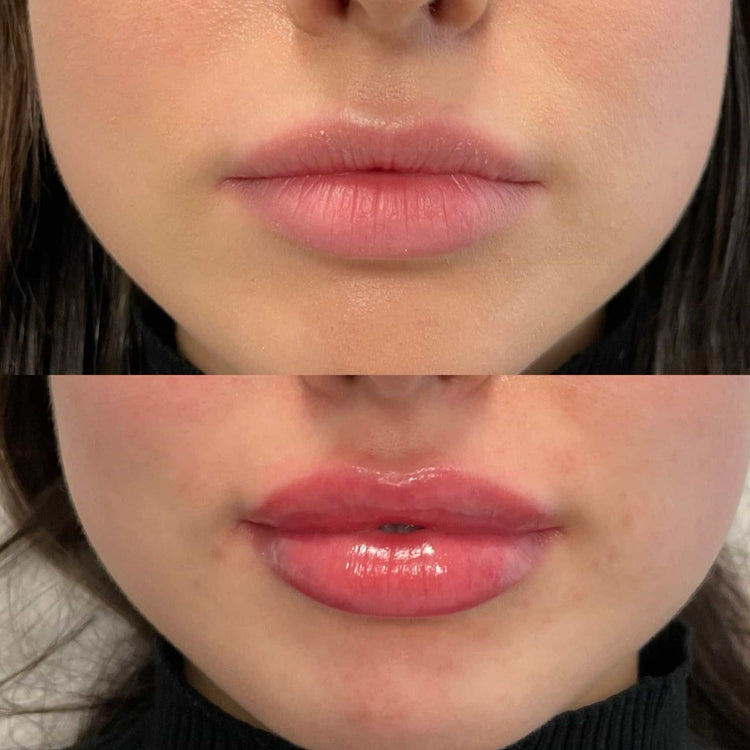
It’s important to note that dermal fillers are temporary, meaning their effects will eventually fade. The duration of the results varies depending on the type of filler used, individual metabolism, and lifestyle factors.
Choosing a Qualified Practitioner
Choosing a qualified practitioner is paramount when considering dermal filler treatments. Look for a practitioner who is licensed, experienced in administering dermal fillers, and has a proven track record of successful results. Consulting with multiple practitioners and seeking recommendations from friends or family can help you make an informed decision.
Experience and Qualifications
Choosing a qualified practitioner is essential for ensuring safe and effective dermal filler treatment. Experience and qualifications are key factors to consider when making your choice.
Look for a practitioner who has extensive experience administering dermal fillers, specifically the type of filler you’re interested in. They should be well-versed in different injection techniques and have a deep understanding of facial anatomy to ensure optimal results and minimize risks.
In addition to experience, confirm that the practitioner holds relevant medical qualifications and licenses. They may be a doctor (e.g., a dermatologist or plastic surgeon), a nurse practitioner, or a physician assistant specializing in aesthetic medicine. Ensure they are licensed to practice in your region and stay up-to-date with the latest advancements in dermal filler treatments through continuing education and professional development.
Consultation and Assessment
Choosing a qualified practitioner is crucial for ensuring safe and effective results from dermal filler treatments.
Look for someone who:
* **Is medically qualified:** They should hold relevant medical qualifications such as a doctor (dermatologist or plastic surgeon), nurse practitioner, or physician assistant specializing in aesthetic medicine. Ensure they are licensed to practice in your region.
* **Has extensive experience with dermal fillers:** Inquire about their experience administering various types of fillers and familiarity with different injection techniques specific to your desired treatment area.
* **Stays up-to-date:** A qualified practitioner will continuously seek education and training on the latest advancements in dermal fillers, ensuring they utilize safe and effective procedures.
A thorough consultation is essential before undergoing any dermal filler treatment. Use this time to:
* **Discuss your goals:** Clearly communicate your desired outcome and expectations to the practitioner.
* **Review your medical history:** Be transparent about any medical conditions, allergies, or medications you’re taking, as these can influence the suitability of treatment and potential risks.
* **Ask questions:** Don’t hesitate to ask about the type of filler they plan to use, the procedure process, expected results, potential side effects, and aftercare instructions.
By carefully considering these factors and choosing a qualified practitioner, you can minimize risks and maximize your chances of achieving satisfying and natural-looking results with dermal fillers.
Treatment Plan and Expectations
Choosing a qualified practitioner is essential for safe and effective dermal filler treatments. Look for someone who:
* **Is medically qualified:** They should hold relevant medical qualifications such as a doctor (dermatologist or plastic surgeon), nurse practitioner, or physician assistant specializing in aesthetic medicine. Ensure they are licensed to practice in your region.
* **Has extensive experience with dermal fillers:** Inquire about their experience administering various types of fillers and familiarity with different injection techniques specific to your desired treatment area.
* **Stays up-to-date:** A qualified practitioner will continuously seek education and training on the latest advancements in dermal fillers, ensuring they utilize safe and effective procedures.
A thorough consultation is essential before undergoing any dermal filler treatment. Use this time to:
* **Discuss your goals:** Clearly communicate your desired outcome and expectations to the practitioner.
* **Review your medical history:** Be transparent about any medical conditions, allergies, or medications you’re taking, as these can influence the suitability of treatment and potential risks.
* **Ask questions:** Don’t hesitate to ask about the type of filler they plan to use, the procedure process, expected results, potential side effects, and aftercare instructions.
Once you have found a qualified practitioner, be sure to discuss your expectations for the treatment outcome. A good practitioner will listen carefully to your concerns and provide realistic expectations based on your individual needs and anatomy.
Remember, dermal fillers are not a one-size-fits-all solution.
The type of filler used, the amount injected, and the injection technique will vary depending on individual factors and desired results. A qualified practitioner will customize the treatment plan to achieve the best possible outcome for you.
When considering dermal fillers, it’s essential to establish realistic expectations. Dermal fillers can enhance your appearance, but they are not a miracle cure or a solution for all aesthetic concerns.
Results will vary depending on individual factors, such as skin type, anatomy, and lifestyle habits. It’s important to have an honest conversation with your practitioner about your goals and understand that achieving them may involve multiple treatment sessions.
A qualified practitioner will provide you with realistic expectations based on your individual circumstances and ensure you fully understand the potential outcomes before undergoing any treatment.
The Future of Dermal Fillers in the UK
The future of dermal fillers in the UK looks bright, driven by advancements in technology, increasing demand for minimally invasive procedures, and a growing acceptance of aesthetic enhancements.
Several key trends are shaping this evolution:
-
Increased Focus on Customized Treatments: Practitioners will increasingly tailor treatments to individual needs by combining different filler types, injection techniques, and post-treatment care protocols.
-
Innovation in Filler Technology: Research and development efforts are constantly yielding new filler formulations with improved longevity, biocompatibility, and customizable properties. We can expect to see fillers that offer even longer-lasting results, smoother integration with natural tissue, and greater precision in targeted treatments.
-
Expansion into New Applications: Dermal fillers are increasingly being explored for non-traditional uses, such as treating scarring, improving skin texture, addressing hair loss, and enhancing breast volume. This wider scope of application will broaden the appeal of dermal fillers to a broader range of patients.
-
Emphasis on Safety and Patient Education: As awareness of dermal fillers grows, there will be a greater emphasis on patient education regarding potential risks, benefits, and realistic expectations. This will lead to more informed decision-making and responsible use of dermal fillers.
-
Regulation and Quality Control:** The UK is likely to see stricter regulations regarding the marketing, distribution, and administration of dermal fillers. This will help ensure that patients receive safe and effective treatments from qualified practitioners who use high-quality products.
Advancements in Filler Technology
Increased Accessibility and Affordability
Growing Demand for Non-Surgical Procedures
The future of dermal fillers in the UK is undoubtedly promising, with growing demand for non-surgical aesthetic procedures and advancements in filler technology.
Here are some key trends shaping the landscape:
-
Personalized Treatments: Practitioners will move beyond one-size-fits-all approaches, tailoring treatments to individual needs using a combination of filler types, injection techniques, and post-treatment protocols.
-
Technological Advancements: The development of new filler formulations with improved longevity, biocompatibility, and customizable properties will revolutionize the field.
-
Expansion into New Applications: Beyond traditional uses for facial rejuvenation, dermal fillers are finding applications in treating scarring, improving skin texture, addressing hair loss, and even enhancing breast volume.
-
Enhanced Patient Education: Greater emphasis will be placed on educating patients about the benefits, risks, and realistic expectations associated with dermal filler treatments. This will empower individuals to make informed decisions about their aesthetic choices.
-
**Increased Regulation and Quality Control:** Expect stricter regulations governing the marketing, distribution, and administration of dermal fillers in the UK. This will ensure patient safety by promoting the use of high-quality products and qualified practitioners.
Enquire about enhancing your facial features with dermal fillers at It’s Me & You Clinic
- How To Find A Certified Jaw Filler Practitioner In Kingston Upon Thames - September 4, 2025
- How To Combine Baby Botox With Other Treatments In London - September 2, 2025
- How To Add The Nu-Derm Skin System Into Your Daily Skincare Routine In Surrey - August 29, 2025

